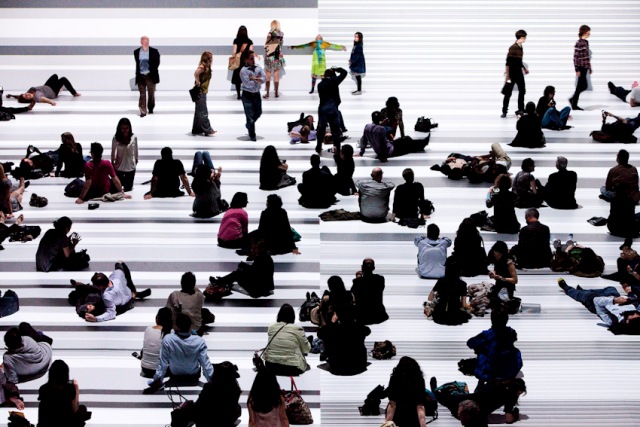Science, Art, Litt, Science based Art & Science Communication
'IDENTITY: The Sound In Art' Translates Art Into Music With Digital Technology (PHOTOS)
Sometimes a great work of art speaks to you, but have you ever heard it sing to you? Multimedia artist Kelsey Sweet and musician Scott Turek were determined to find out.
The pair set out to discover what a painting sounds like through breaking down Sweet's paintings into digital information and translating it from sight to sound. The project, called "IDENTITY: The Sound in Art," could pave new possibilities for the future of art experience. It sounds like a fascinating project but I didn't like what I heard!
Kelsey had began researching neurological implications for aesthetics which involved analyzing statistical data of her artworks generated from monochromatic images. Right about the same time, Scott was enrolled in an electronic music composition course at UNR and was learning the basic premise of Musique Concrete. While finding ways to create and manipulate sound, Scott fell upon a few methods and programs that allowed him to import any digital data ranging from images to the executable files themselves in to audio information. When they realized that they were working with similar implications, they cross pollinated their research and came up with the idea to turn the parts of the physical artwork that Kelsey was working on in to viable compositions of sound art.
After experimenting with importing various digital mediums in to the program (called Audacity, a free downloadable program by Dominic Mazzoni), they found that the best and cleanest sounds came from simple .exe windows executable files and monochromatic images. Kelsey gave a few series' of her artworks as monochromatic bitmap files to work with, and after importing them in to the program, voila! The sound came alive! After a sufficient collection of sounds were obtained, they used Apple's digital audio workstation Logic to arrange the sounds into meaningful narratives.
Each individual image has it's own auditory signature/representation. In order to find out more about this, Kelsey and Scott need to research more for a correlation between why the pictures sound the way that they do when imported. From what they understand, the images are imported pixel by pixel in a top-down fashion and are spread linearly from there.
Source: http://www.huffingtonpost.com/2012/05/02/identity-kickstarter_n_147...
Views: 115
Replies to This Discussion
-
RYOJI IKEDA the transfinite
 source : http://www.armoryonpark.org/index.php/programs_events/detail/ryoji_...
source : http://www.armoryonpark.org/index.php/programs_events/detail/ryoji_...RYOJI IKEDA : THE TRANSFINITE
Ryoji_Ikeda : http://en.wikipedia.org/wiki/Ryoji_Ikeda
Ryoji_Ikeda : http://www.ryojiikeda.com/
-
© 2025 Created by Dr. Krishna Kumari Challa.
Powered by
![]()